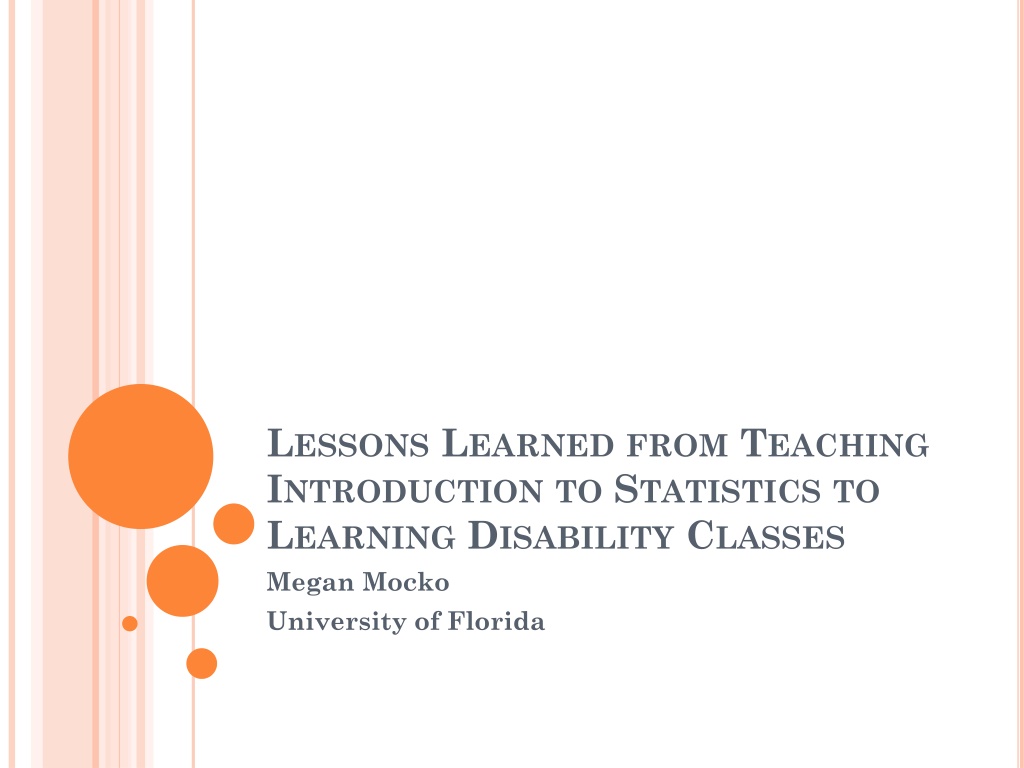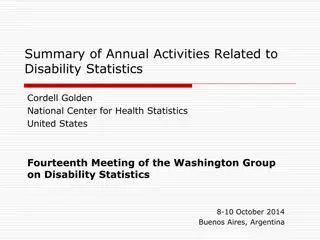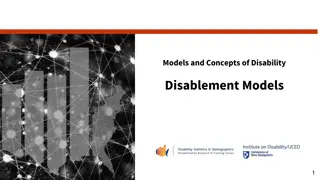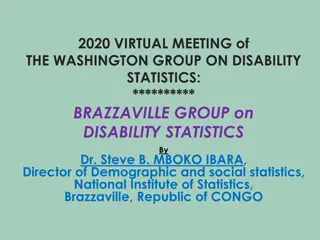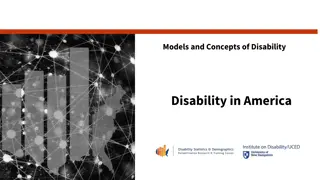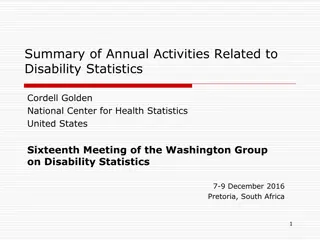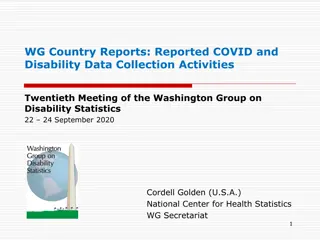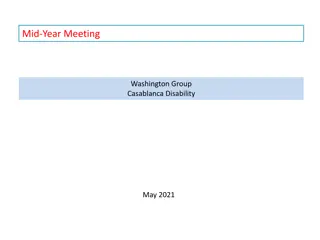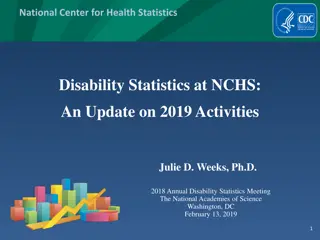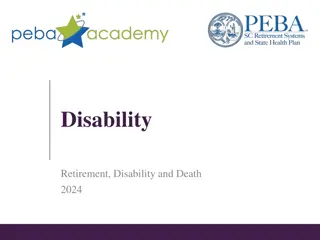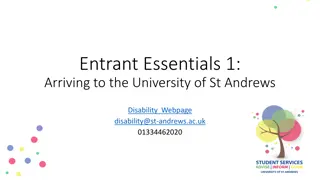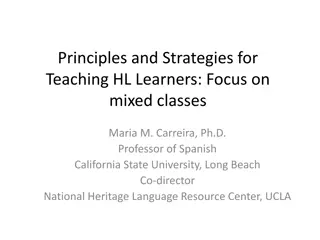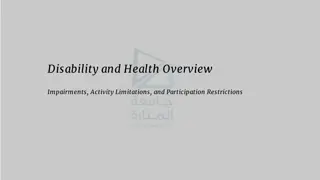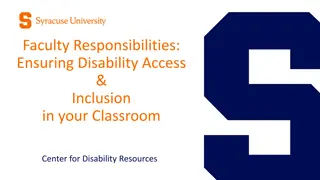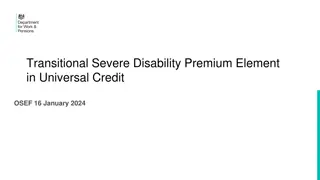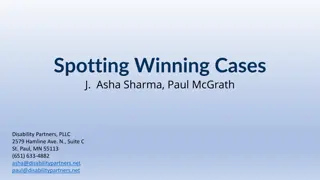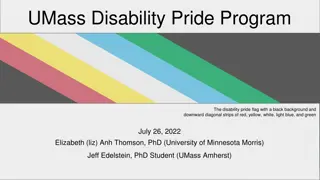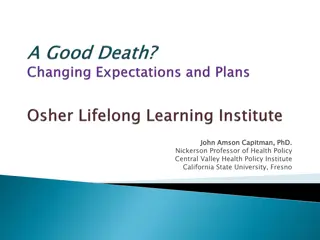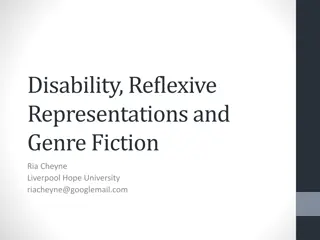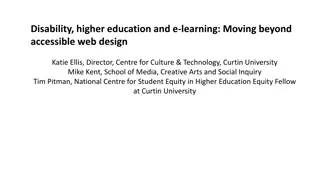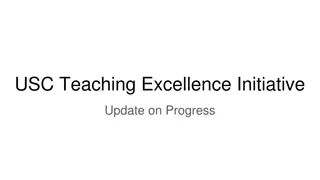Insights from Teaching Introduction to Statistics to Learning Disability Classes
Exploring the differences in teaching regular and learning disability sections of an Intro to Statistics course, focusing on structure, assignments, student entry criteria, and a shift in perspective. Accommodating various disabilities like dyslexia, ADHD, and more, the approach emphasizes customized support and inclusive learning practices for students with disabilities.
Download Presentation

Please find below an Image/Link to download the presentation.
The content on the website is provided AS IS for your information and personal use only. It may not be sold, licensed, or shared on other websites without obtaining consent from the author. Download presentation by click this link. If you encounter any issues during the download, it is possible that the publisher has removed the file from their server.
E N D
Presentation Transcript
LESSONS LEARNED FROM TEACHING INTRODUCTION TO STATISTICS TO LEARNING DISABILITY CLASSES Megan Mocko University of Florida
OVERVIEW Difference between regular and LD option of our Introduction to Statistics Course Type of Disabilities in the class Taking a journey to look at Learning Disabilities Tactics
STRUCTURE STA 2023 Regular 1800 to 2500 students Online with option to attend live sections Office Hours of Instructor 40 hours a week tutoring room time STA 2023 LD Max 25 students per section Live Number of Students Lecture Tutoring Office Hours of Instructor Private Tutoring by appointment Review Sessions 2 hours 2x a week 1 TA for 25 students TA to student ratio 1 TA for 120 to 160 students
ASSIGNMENTS STA 2023 Regular 3 multiple choice exams 10 labs Online STA 2023 LD 3 long answer exams Exams Labs Quizzes 14 labs 10 to 12 Paper in class quizzes Graded by hand Homework Suggested assignments, check answers in tutoring room Other Project
HOW DO STUDENTS GET INTO THE SPECIAL SECTION? Students have to have a registered learning disability with the Disability Resource Center on campus. Disabilities have included: Hearing/Vision impairments Dyslexia Reading Comprehension Trouble remembering mathematical symbols ADD/ADHD
SHAPES Rectangle Triangle Circle
COINS Circle Circle Circle
COINS dime dime dime
WHATISTHEIMPORTANT CHARACTERISTIC? It was not the color of the metal. It was not the shape of the metal. It was the size and the image on the metal.
THEPROBLEMSWITHWORDS Experimental units Experimental units Explanatory variables Explanatory variable
TROUBLEWITH SYMBOLS If p stands for population proportion, why doesn t n stand for no s . Why does r stand for correlation rather than residual ?
MINIMIZE THEORY Maximize Examples
LOTSOF SCAFFOLDING Introduce new idea. Give at least 3 examples. Review previous days topic using clicker questions. Homework problems assigned weekly usually 5 to 10 pages long. Some problems similar to class and others from the textbook. 2 two hour homework review sessions a week Quiz on returned graded homework. Labs are tied to material in class. Practice questions before test: 23 to 34 questions. Exam
TEACHTHEMTO READ WORD PROBLEMS Suppose that IQ scores are normally distributed with a mean of 100 and a standard deviation of 16. Find the probability that the someone s IQ score is more than 120. Suppose that a professional basketball player gets 70% of the baskets from the free throw line. Suppose that each of his shots can be considered independent. Suppose that he makes 10 free throw shots. Let X = the number of shots made. What is the probability that he makes 8 or more shots?
MISCUES Suppose that IQ scores are normally distributed with a mean of 100 and a standard deviation of 16. Find the probability that the someone s IQ score is more than 120. Suppose that a professional basketball player gets 70% of the baskets from the free throw line. Suppose that each of his shots can be considered independent. Suppose that he makes 10 free throw shots. Let X = the number of shots made. What is the probability that he makes 8 or more shots?
MISCUES Suppose that IQ scores are normally distributed with a mean of 100 and a standard deviation of 16. Find the probability that the someone s IQ score is more than 120. Suppose that a professional basketball player gets 70% of the baskets from the free throw line. Suppose that each of his shots can be considered independent. Suppose that he makes 10 free throw shots. Let X = the number of shots made. What is the probability that he makes 8 or more shots?
PROVIDING STRUCTURE Significance Test for Population Proportion Assumptions Met?: random samples npo greater than or equal to 15 n(1-po) greater than or equal to 15 Categorical data Null Hypothesis: Ho Alternative Hypothesis: Ha Test Statistic: z-score summarizes the info from the sample p-value: "corner" area Probability that the test statistic will take on values at least as extreme as the one observed if Ho is true. Interpretation
DESCRIPTIONSAND INTERPRETATIONS Normal Distribution. Sampling Distribution Problems. Two Sample Confidence Intervals We are ___% confident that the population mean/proportion {context} for Group 1 is between ____ more/less to ____ more/less than the population mean/proportion for Group 2. (adapted from Agresti/Franklin)
USE GRAPHSASMUCHASPOSSIBLE. Every time, draw out the curve of the Normal Distribution marking off the following mean, mean 1 standard deviation mean 2 standard deviations mean 3 standard deviations For at least 3 examples, make a graph of possible values of X and its probabilities for a Binomial Distribution.
STUDENTWITH HEARING DISABILITY Transcribe lectures After lecture In real time Numbers are very hard to lip read. During office hours, use a word program to discuss problems.
STUDENTWITH VISUAL DISABILITY Use light color paper not white for tests. Use very large t or z table, if using tables.
STUDENTSWITH ADD/ADHD Lectures are very much like discussions. Lots of back and forth. Encourage lots of questions. Encourage Focus. Occasionally call on a student or stand near a student to try and get them to focus better. Working in groups is sometimes successful. However, one-on-one tutoring sessions has been the most successful.
STUDENTSWITH MATH ANXIETY Some students are certain that they are going to fail before they even begin. The support system is there to support them, if they take advantage and work they will pass. As long as they are putting forth the effort to learn, I will spend as much time as necessary explaining the material until they get it.
STUDENTSWITH MATH ANXIETY Some students have a fear of math instructors, so try to make them as comfortable as possible. Test anxiety.
PATIENCE Every student is an individual with different past experiences and skills. Sometimes it takes multiple tries, examples and explanations to have it click in their mind.
